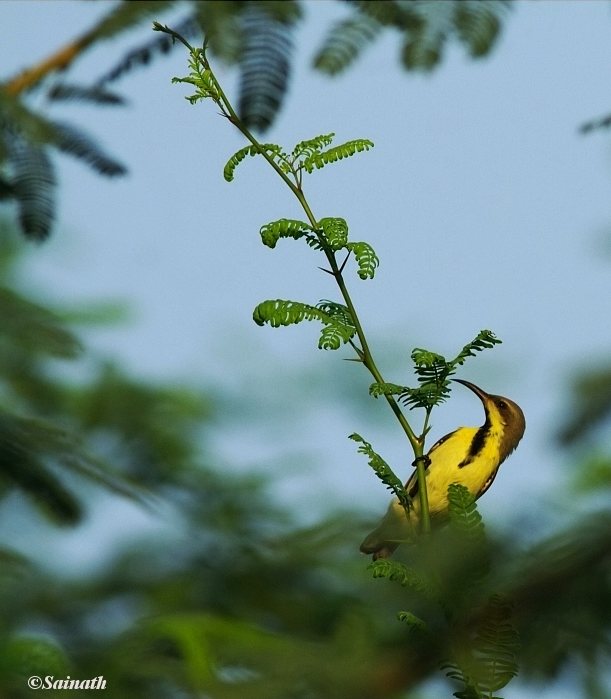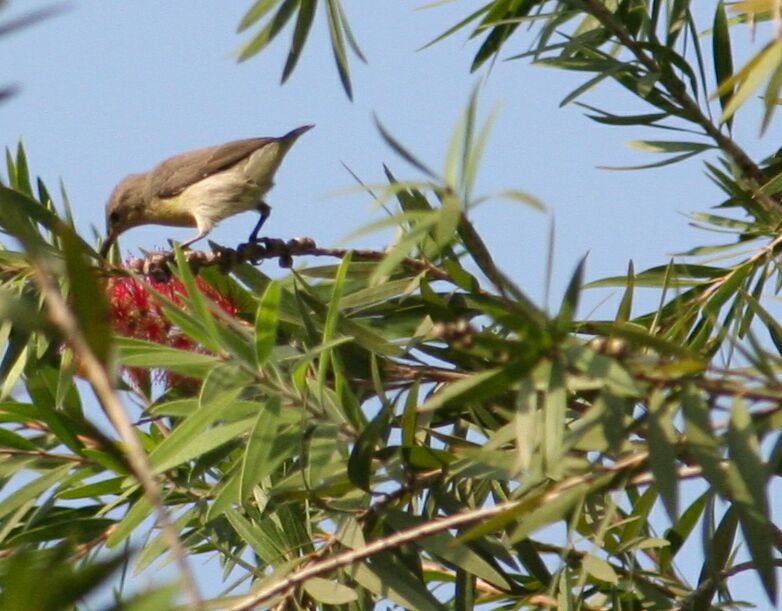
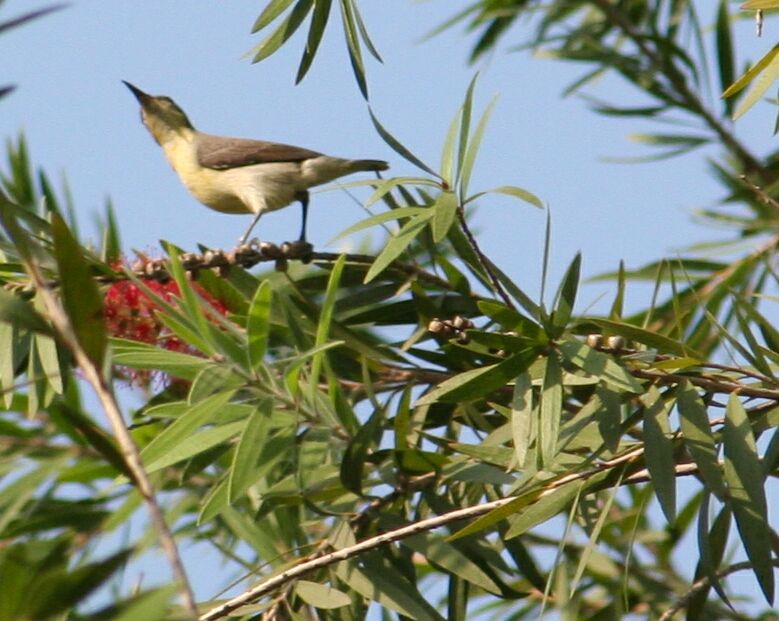
In between, she would use her curved beak to dip into the flower stems:

Bending dangerously on her perch...
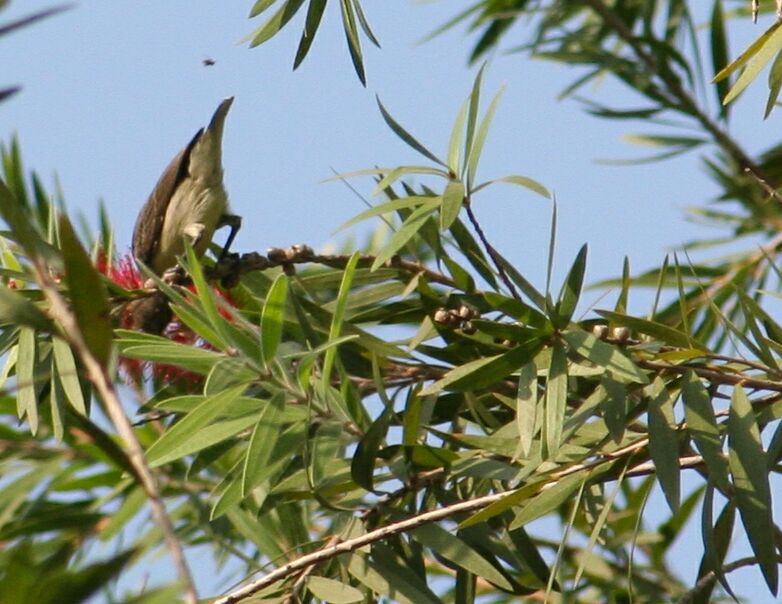
But she was forever on the alert, looking around for danger:
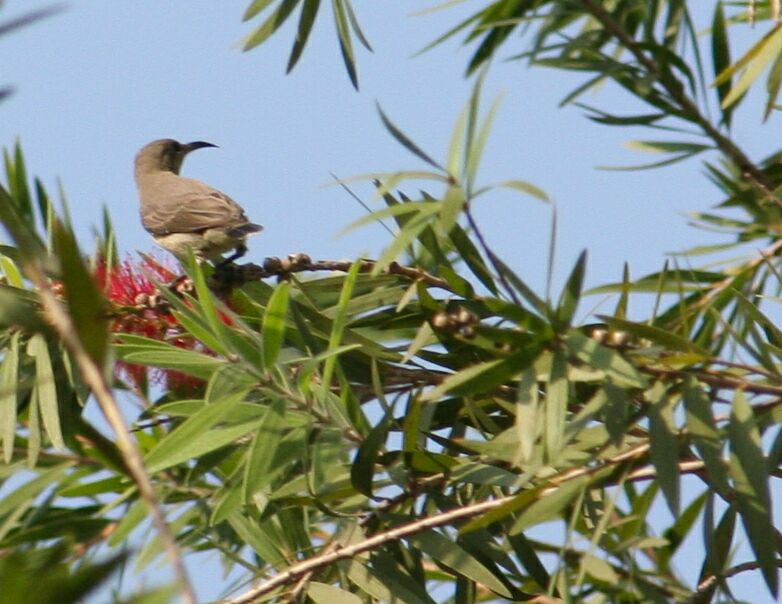
The purple sunbird is one of the most common birds in the campus. It can be found feasting on flowering trees at any time of day, but it is so small that it is hard to find. The best way is to see it when it is flying in, but even then it may be difficult to detect. Half a second after you got a good look at it, it will jump and go somewhere else; if you are looking at them through binoculars, it can be quite bothersome. Fortunately, our eyes are amazingly efficient - you will find that you can easily distinguish a small localized motion in the leaves caused by birds, from other motions due to the wind etc. Computer vision systems cannot even come close when it comes to detecting such patterns in visual motion fields. On any given day, if you are sitting for some time near a flowering tree, the chances are extremely good that you will be able to sight the sunbird.
A week after my first sighting of this bird, I saw it again:
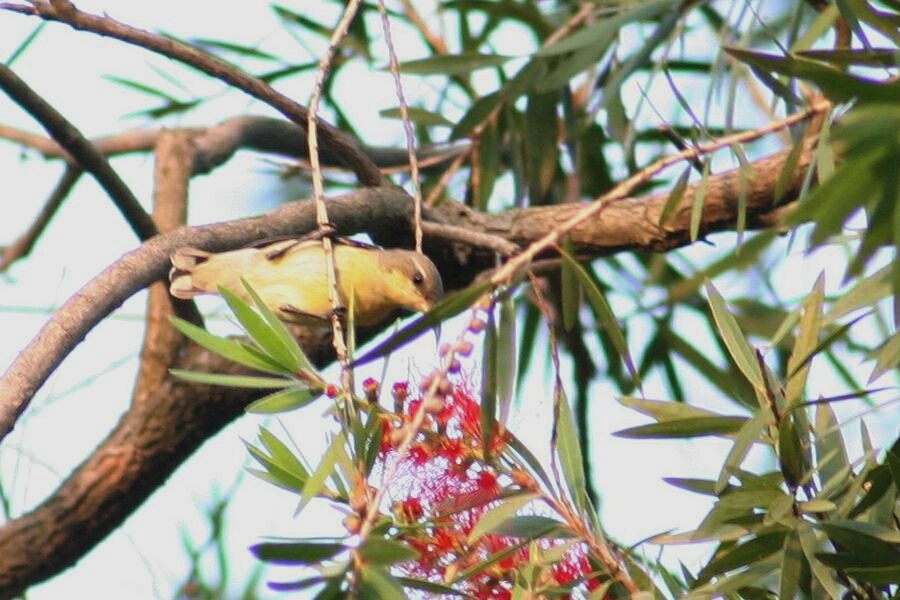
On a visit to Calcutta late October, I was sitting at my aunt's house when I
saw this sunbird hovering on a flowering tree just beyond an open
window. Fortunately my camera was with me and I got this shot from a
distance of barely two yards:
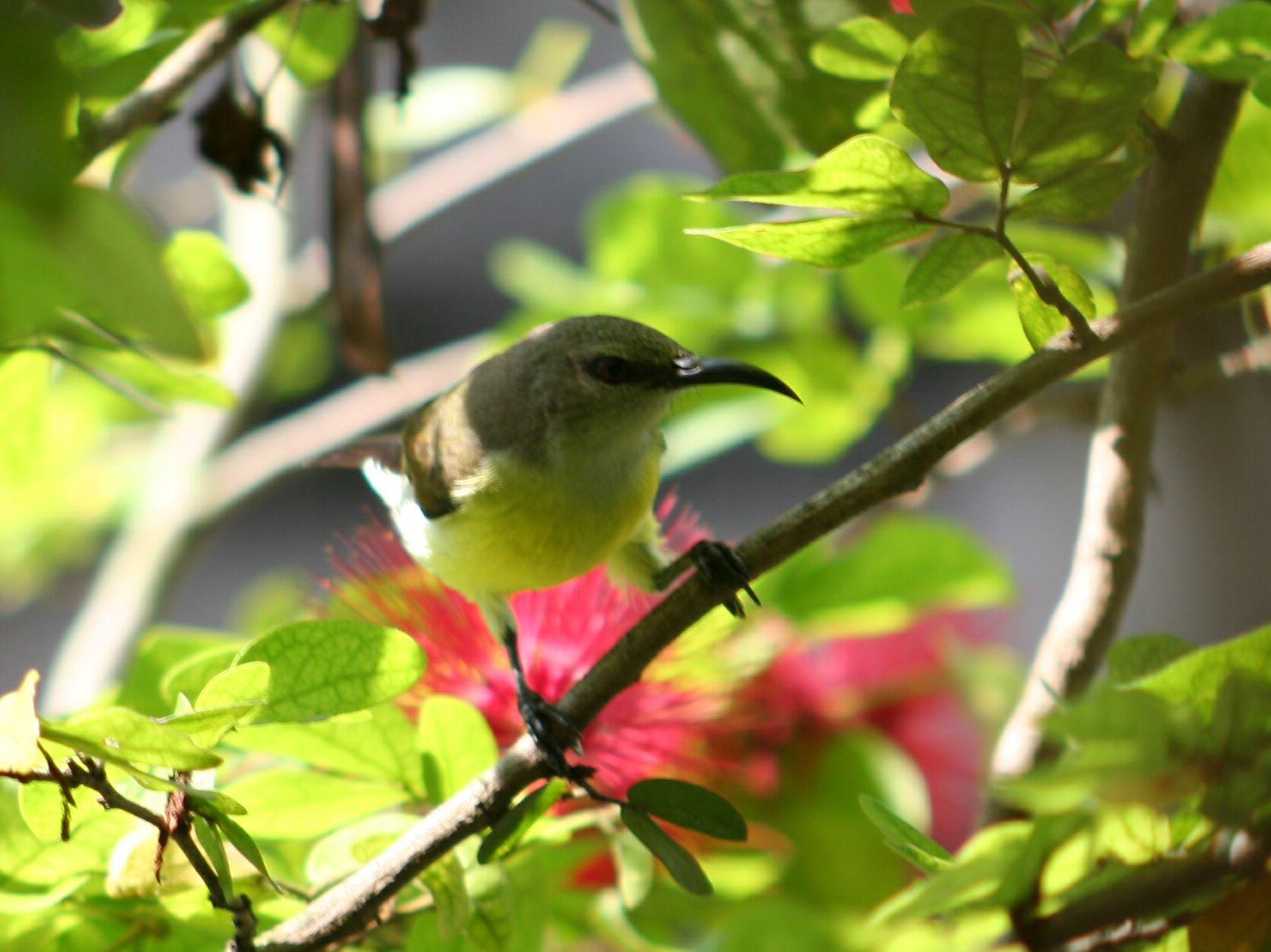
But these days, the novelty has worn off, and I seek the male sunbird more, because of its startling changes of colour.
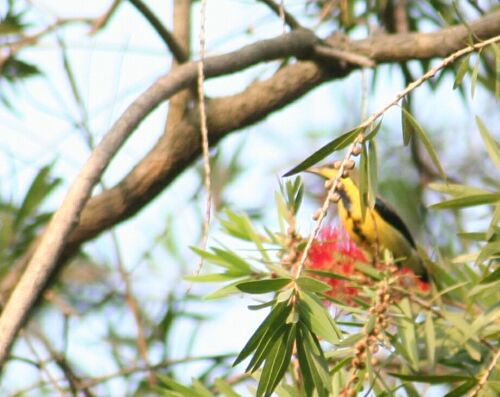 of a necktie. Aha! I thought: Another species!
of a necktie. Aha! I thought: Another species!
Later it turned out (thanks to Barun and Sushmita Banerjee), that the Purple Sunbird male has very different colourations. This particular colouration they wear in the non-mating season, and is called the "eclipse plumage". Why evolution should be so extravagant as to program such exotic feathering colourations into their genes is a complete mystery to me. . .
Here you can see what is possibly the same individual, on another part of the
bottlebrush tree:
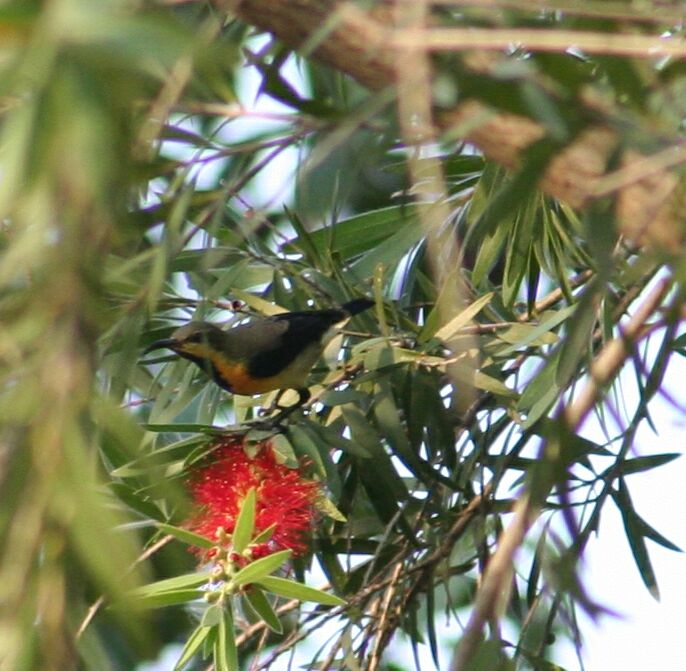
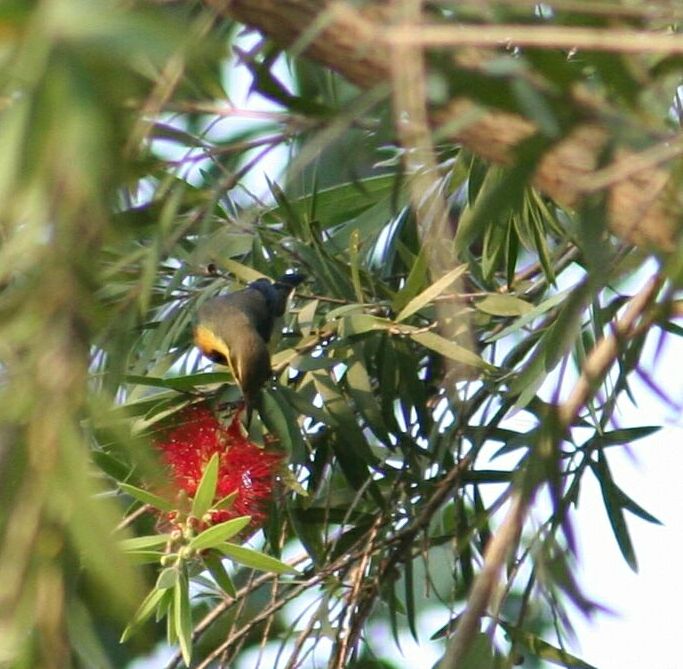
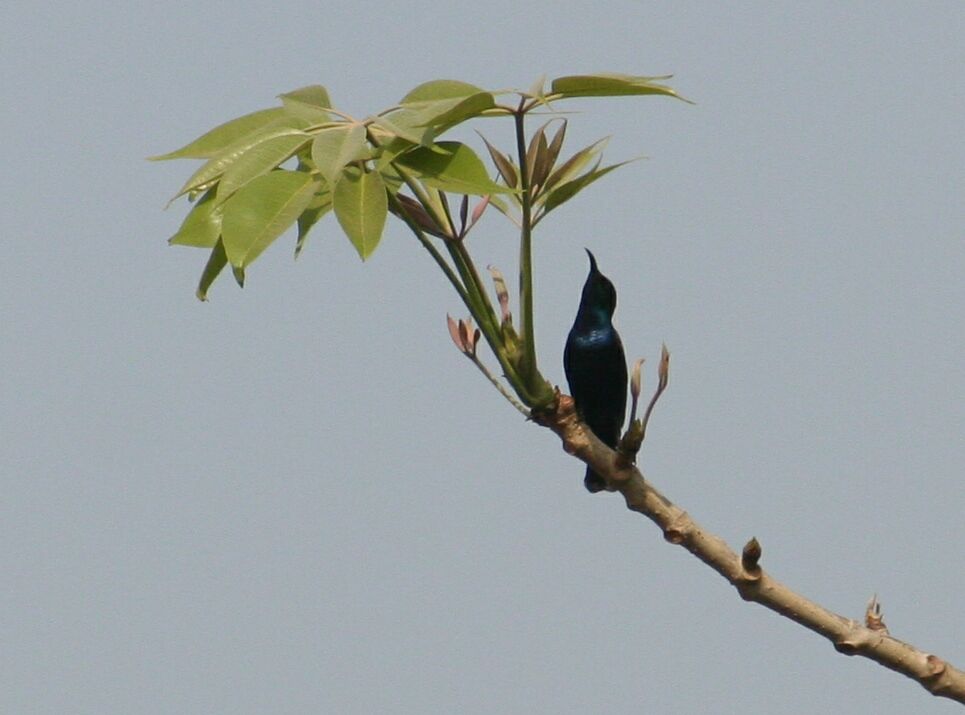
Here's another shot of the mating male:
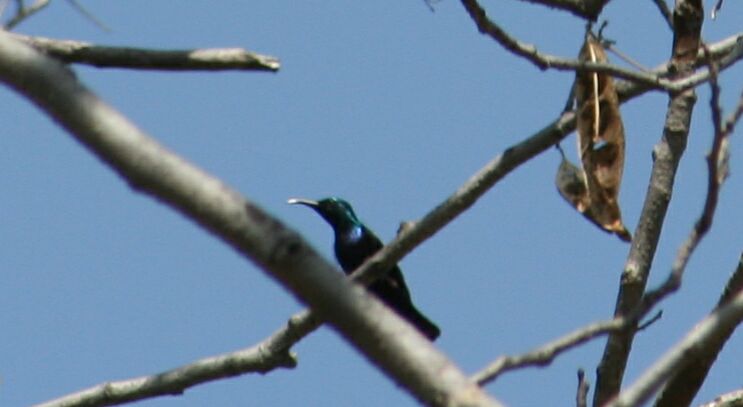
Finally, an exceptional image from Sainath Vellal:
